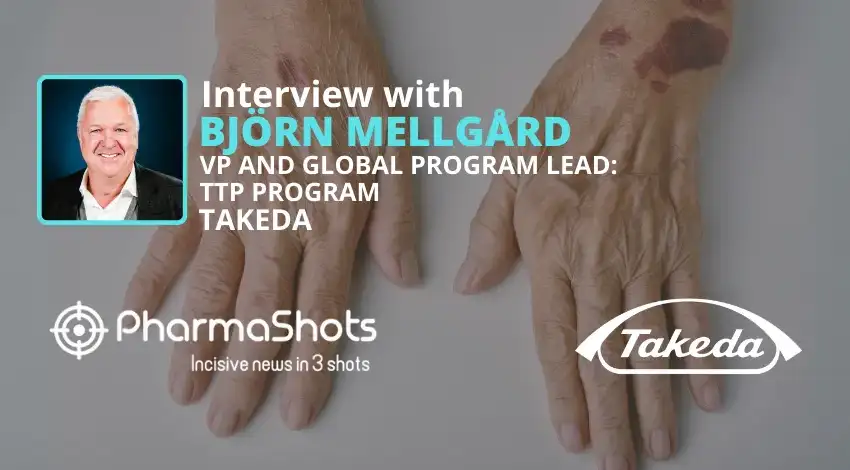PharmaShots Interview: Apellis’ Federico Grossi Shares Insights on the Data in GA Presented at ARVO 2021
In an interview with PharmaShots, Apellis’ Chief Medical Officer, Federico Grossi shares his views on the data presented at ARVO 2021. The studies support AI analytics as a tool to distinctly measure disease activity well as the therapeutic effect in GA.
Shots:
- Apellis presented five oral presentations from an AI collaboration with the Ophthalmic Imaging Analysis (OPTIMA) group. The studies support AI analytics as a tool to distinctly measure disease activity well as the therapeutic effect in GA
- Pegcetacoplan targets C3, the central protein of the complement cascade
- The company is currently evaluating pegcetacoplan in GA, amyotrophic lateral sclerosis (ALS), immune complex membranoproliferative glomerulonephritis (IC-MPGN) and C3 glomerulopathy (C3G), hematopoietic stem cell transplantation thrombotic microangiopathies (HSCT-TMA), and cold agglutinin disease (CAD)
Tuba: Can you give us an overview of the data presented at ARVO 2021?
Federico: The Association for Research in Vision and Ophthalmology (ARVO) 2021 was an opportunity for Apellis to share a wealth of geographic atrophy (GA) data and show our leadership in the retina. At the virtual conference, we presented 10 abstracts that feature a range of studies, from presentations that demonstrate the potential of AI to analyze the growth of GA lesions, to new safety and efficacy data for pegcetacoplan, an investigational targeted C3 therapy, in GA. Highlights include:
- Artificial Intelligence. In collaboration with the Ophthalmic Image Analysis (OPTIMA) group at the Medical University of Vienna, we presented five oral presentations evaluating AI as a tool to identify, monitor, and predict the growth of GA lesions. The analyses were performed on imaging data from our positive Phase 2 FILLY study and confirmed the findings from FILLY, showing that intravitreal pegcetacoplan significantly reduced the growth rate of GA lesions. The data demonstrated that AI can rapidly, distinctly, and reliably measure disease progression as well as therapeutic efficacy in GA. We are particularly excited by the potential of the technology to guide treatment decisions and improve overall outcomes for people living with GA.
- GA. We presented a 24-month update of our Phase 1b study of pegcetacoplan in patients with GA secondary to age-related macular degeneration (AMD) and low vision. The trial was designed to assess the safety of the Phase 3 intravitreal formulation of pegcetacoplan (15mg/0.1mL). The post hoc analysis included eight bilateral patients (disease in both eyes) for whom data were available for at least 24 months. Among the participants, the growth rate of GA lesions in the treated eye was 46% slower than in the untreated fellow eye. There were no reported cases of inflammation with the new formulation among study participants, and two patients developed new-onset exudation during the 24-month study duration, consistent with findings from the FILLY.
Although the study included a limited patient population, the 24-month data give us confidence in the Phase 3 DERBY and OAKS studies of pegcetacoplan in GA. We look forward to sharing DERBY and OAKS top-line results later this year in Q3.
- GA and Wet AMD. We also shared results from a Phase 1b/2, 18-month, open-label study evaluating the safety of pegcetacoplan in 17 patients with wet AMD also being treated with anti-VEGF therapies, standard approved medicines for wet AMD. The majority of treatment-emergent adverse events were either mild or moderate. The study showed that pegcetacoplan in combination with anti-VEGF therapy in patients with wet AMD appears to be safe and well-tolerated.
- Real-world clinical data. In collaboration with Verana Health, we presented data from our analysis of the IRIS Registry, the largest real-world clinical database in GA. The retrospective study included more than 69,000 patients diagnosed with GA and analyzed changes in visual acuity and disease progression for over two years, as well as the occurrence of concurrent wet AMD. The data showed significant disease progression over the two-year period, highlighting the urgent need for treatment. Data also revealed that patients with wet AMD were also nearly three times more likely to develop new-onset wet AMD in an eye with GA when wet AMD had already been detected in the fellow eye.
- Phase 2 FILLY Analysis. Finally, we presented an exciting post hoc analysis of our positive Phase 2 FILLY study that showed a 39% reduction in the rate of progression from nascent GA, an earlier form of the disease, to GA in patients treated with monthly pegcetacoplan versus sham injections. In the analysis, progression from nascent GA to GA was observed in 50.0% of the pegcetacoplan-treated group and 81.8% of the sham-treated group. This first-ever observation of slowed nascent GA progression in a Phase 2 study indicates a potential benefit from earlier intervention with pegcetacoplan in patients with GA.
Tuba: Can we discuss more the epidemiology (incidence, prevalence, etc) and more details on geography atrophy?
Federico: GA is an advanced form of AMD that leads to progressive destruction of the retina, causing visual impairment and eventually blindness. More than 5 million people worldwide have GA, including one million people in the U.S. This is a disease that severely degrades visual function, independence, and quality of life because it impacts essential everyday activities like driving and reading. While there are multiple effective treatments available for wet AMD, there are no approved treatments for GA.
Tuba: What other indications is Apellis assessing for pegcetacoplan?
Federico: We recently received FDA approval of pegcetacoplan, with the brand name EMPAVELI, for adults with paroxysmal nocturnal hemoglobinuria (PNH), which is a rare blood disease. With our partner Sobi, we have also submitted applications to other global regulatory agencies.
Targeting C3 has treatment potential across several therapeutic areas, and our pipeline reflects that promise. We are currently evaluating pegcetacoplan in GA, amyotrophic lateral sclerosis (ALS), immune complex membranoproliferative glomerulonephritis (IC-MPGN), and C3 glomerulopathy (C3G), hematopoietic stem cell transplantation thrombotic microangiopathies (HSCT-TMA), and cold agglutinin disease (CAD). As you can see, our research spans several rare diseases in neurology, nephrology, and hematology in addition to ophthalmology.
Tuba: What are pegcetacoplan MoA and its different formulations?
Federico: Pegcetacoplan targets C3, the central protein of the complement cascade. C3 is the only target that controls all of the three complement activation pathways that can drive disease. We have a formulation for systemic diseases such as PNH and an intravitreal formulation for delivery into the eye in geographic atrophy.
Tuba: What is the correlation between ophthalmology, hematology, nephrology & neurology. How one molecule target all the indications?
Federico: That’s a great question. At the surface, these diseases are all completely different, but when you look a layer deeper, they are all driven by excessive complement activation. Complement defends the body against infection. When functioning normally, its role is to recognize and eliminate pathogens, foreign and damaged material. However, when complement is overactivated, it can attack and destroy healthy cells and tissue, leading to numerous diseases, including the ones we are researching.
Tuba: How can this therapy be beneficial in patients with GA?
Federico: GA lesions are dying areas of the retina that grow progressively and cause visual impairment and eventual blindness. Our positive Phase 2 FILLY study has demonstrated that pegcetacoplan significantly reduces the growth rate of GA lesions. We completed enrollment of DERBY and OAKS, our Phase 3 studies in GA, and look forward to sharing top-line results from these pivotal studies in Q3 of this year.
Tuba: Is there any patient support program for pegcetacoplan?
Federico: With our US approval in PNH, we do offer patient support for EMPAVELI through our ApellisAssist program. As of now, we are still in the process of studying the efficacy and safety of pegcetacoplan for GA, so we need to learn more about investigational therapy before implementing patient support programs in this area. However, Apellis is committed to improving the lives of patients, so assuming positive results in Q3, we will work urgently to address how we can bring pegcetacoplan to GA patients.
Main Image Source: LifeSpan
About Federico Grossi:

Dr. Grossi was Potentia Pharmaceuticals clinical research director when he joined Apellis as the new company’s clinical research director in 2010. Dr. Grossi received his medical degree from the University of Cordoba, in Argentina, and his PhD degree in physiology from the University of Louisville, in Kentucky.
Related Post: ViewPoints Interview: GSK’s Mike Crichton Shares Insights on the Approval of Benlysta in Europe




